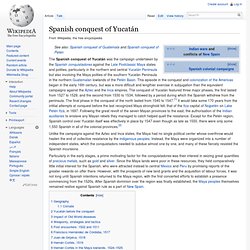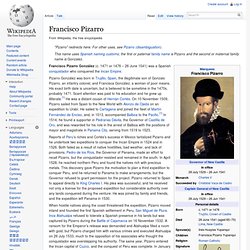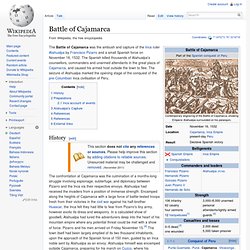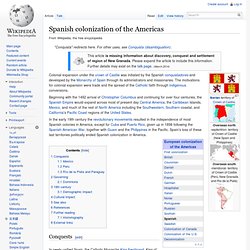

Spanish conquest of Yucatán. The Spanish conquest of Yucatán was the campaign undertaken by the Spanish conquistadores against the Late Postclassic Maya states and polities, particularly in the northern and central Yucatán Peninsula but also involving the Maya polities of the southern Yucatán Peninsula in the northern Guatemalan lowlands of the Petén Basin.

This episode in the conquest and colonization of the Americas began in the early 16th century, but was a more difficult and lengthier exercise in subjugation than the equivalent campaigns against the Aztec and the Inca empires. The conquest of Yucatán featured three major phases, the first lasted from 1527 to 1529, and the second from 1530 to 1534, followed by a period during which the Spanish withdrew from the peninsula. Unlike the campaigns against the Aztec and Inca states, the Maya had no single political center whose overthrow would hasten the end of collective resistance by the indigenous peoples.
Geography[edit] Francisco Pizarro. Francisco Pizarro González (c. 1471 or 1476 – 26 June 1541) was a Spanish conquistador who conquered the Incan Empire.

Pizarro González was born in Trujillo, Spain, the illegitimate son of Gonzalo Pizarro, an infantry colonel, and Francisca González, a woman of poor means. His exact birth date is uncertain, but is believed to be sometime in the 1470s, probably 1471. Scant attention was paid to his education and he grew up illiterate.[1] He was a distant cousin of Hernán Cortés. On 10 November 1509, Pizarro sailed from Spain to the New World with Alonzo de Ojeda on an expedition to Urabí.
He sailed to Cartagena and joined the fleet of Martín Fernández de Enciso, and, in 1513, accompanied Balboa to the Pacific.[1] In 1514, he found a supporter in Pedrarias Dávila, the Governor of Castilla de Oro, and was rewarded for his role in the arrest of Balboa with the positions of mayor and magistrate in Panama City, serving from 1519 to 1523.
Early life[edit] Panama[edit] The Famous Thirteen[edit] Spanish conquest of the Inca Empire. Battle of Cajamarca. The Battle of Cajamarca was the ambush and capture of the Inca ruler Atahualpa by Francisco Pizarro and a small Spanish force on November 16, 1532.

The Spanish killed thousands of Atahualpa's counsellors, commanders and unarmed attendants in the great plaza of Cajamarca, and caused his armed host outside the town to flee. The seizure of Atahualpa marked the opening stage of the conquest of the pre-Columbian Inca civilisation of Peru. History[edit] The confrontation at Cajamarca was the culmination of a months-long struggle involving espionage, subterfuge, and diplomacy between Pizarro and the Inca via their respective envoys. Atahualpa had received the invaders from a position of immense strength.
Atahualpa, unlike Montezuma II in Mexico, knew immediately that these men were not gods nor representatives of gods, thanks to reports from his spies. The book History Of The Conquest Of Peru, written by 19th century author William H. Preparations[edit] Atahualpa accepted this invitation. Spanish colonization of the Americas. Iberian territory of Crown of Castile.

Overseas north -septentrion- territory of Crown of Castile (New Spain and Philippines) Overseas south -meridional- territory of Crown of Castile (Perú, New Granada and Río de la Plata) Colonial expansion under the crown of Castile was initiated by the Spanish conquistadores and developed by the Monarchy of Spain through its administrators and missionaries. The motivations for colonial expansion were trade and the spread of the Catholic faith through indigenous conversions.
Beginning with the 1492 arrival of Christopher Columbus and continuing for over four centuries, the Spanish Empire would expand across most of present day Central America, the Caribbean Islands, Mexico, and much of the rest of North America including the Southwestern, Southern coastal, and California's Pacific Coast regions of the United States. Conquests[edit] Mexico[edit] Spanish Conquest of Mexico Map depicting Cortes' invasion route Peru[edit] Río de la Plata and Paraguay[edit] North.